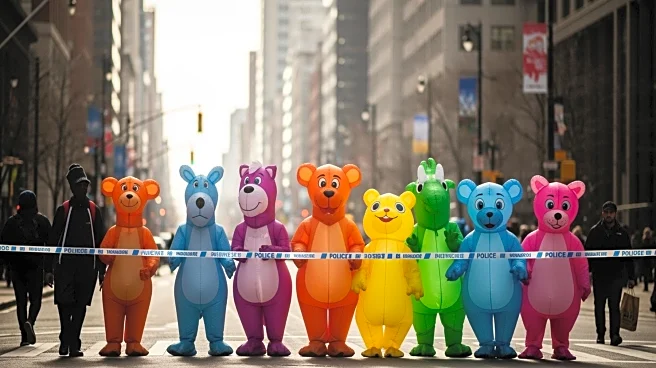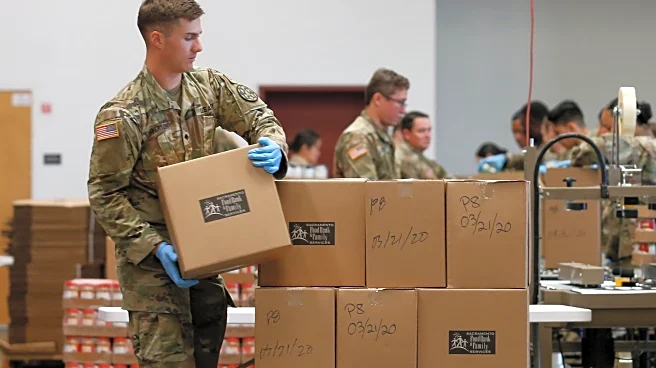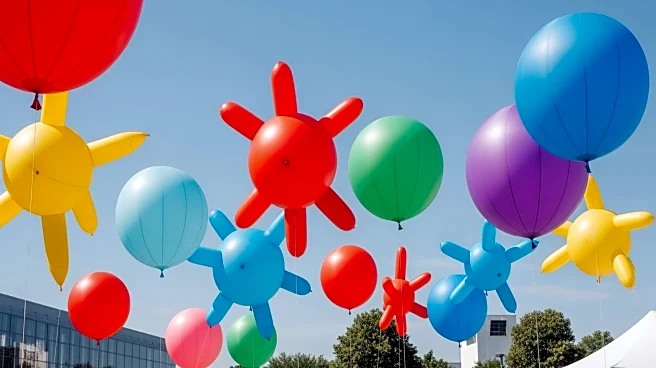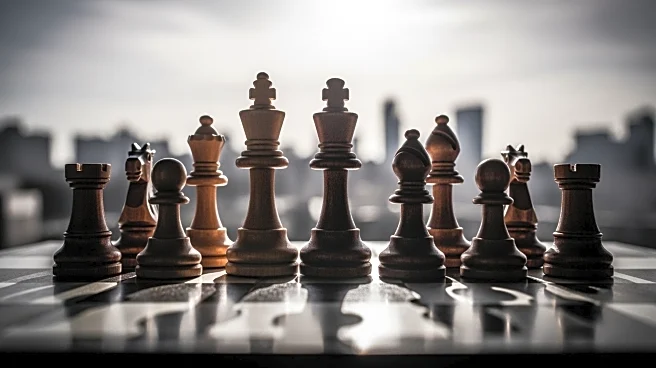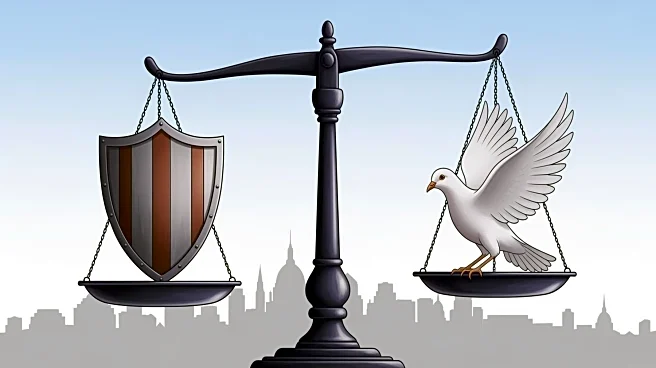What's Happening?
In Washington, D.C., protesters at the No Kings rallies employed inflatable animal costumes to counter the narrative set by President Trump and some Republican leaders. The rallies, initially criticized
by figures such as House Speaker Mike Johnson and Treasury Secretary Scott Bessent, were marked by participants dressed as frogs, pandas, koalas, and other creatures. This tactic, inspired by a similar protest in Portland, aimed to use humor to undermine claims that the protests were anti-American or radical. The use of costumes was intended to make the protests appear less threatening and to challenge the portrayal of protesters as enemies of the state.
Why It's Important?
The use of inflatable costumes in protests represents a strategic shift in how demonstrators engage with political narratives. By employing humor and absurdity, protesters aim to defuse tensions and challenge the government's portrayal of dissent. This approach can alter public perception and reduce the effectiveness of aggressive responses from authorities. The tactic highlights the role of creativity in political activism, potentially influencing future protest strategies across the U.S. and beyond. It underscores the ongoing debate over the balance between security measures and civil liberties in the context of political demonstrations.
What's Next?
The success of these tactics may inspire similar approaches in other protests, potentially leading to broader adoption of humor and absurdity in political activism. As the political climate continues to evolve, stakeholders such as civil rights groups and political leaders may need to reassess their strategies in response to these innovative protest methods. The ongoing dialogue between protesters and government officials could shape future policies regarding public demonstrations and the use of force.
Beyond the Headlines
The use of humor in protests raises questions about the effectiveness of traditional protest methods and the potential for new forms of engagement. It challenges the perception of protests as inherently confrontational and suggests alternative ways to communicate dissent. This development may influence cultural attitudes towards political activism and encourage more inclusive and creative forms of expression.
